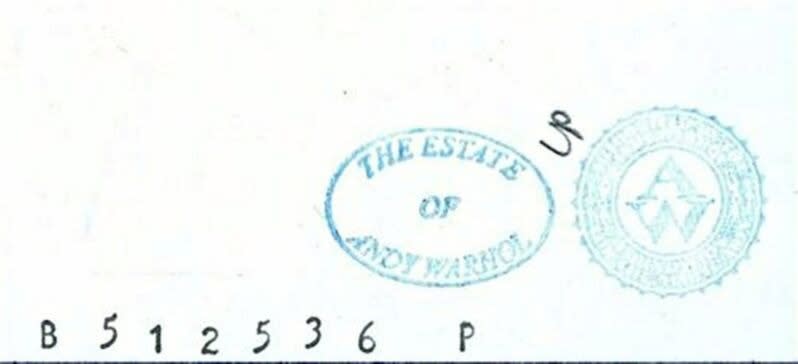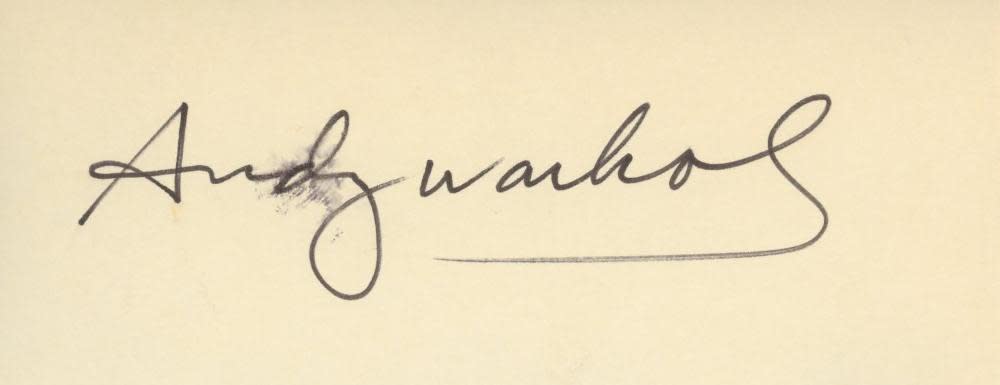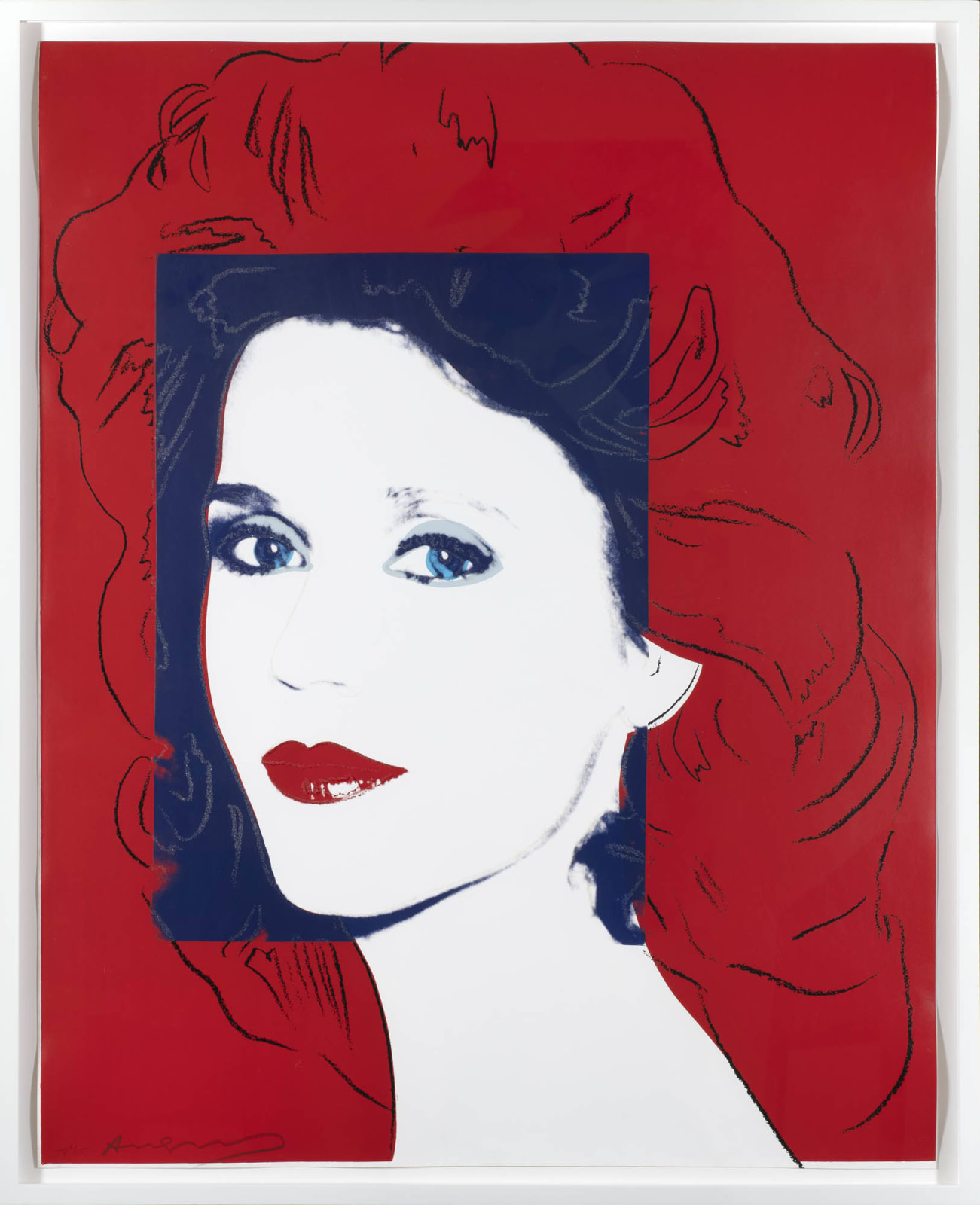
A History of The Andy Warhol Foundation
The Andy Warhol Foundation was created by the Andy Warhol Authentication Board in 1995 as a means to both authenticate the works of the artist and to reduce the amount of copies or fakes on the secondary market.
The Foundation, created soon after the artist’s death 1987, was founded to help preserve Warhol’s vast legacy by Fred Hughes who was Warhol’s business manager and in charge of his estate. As a means for Warhol’s numerous published works to keep their integrity (the Foundation estimated over 100,000 editions in circulation) they understood the importance of authenticating Warhol’s art. At the time, only the F & S Catalogue Raisonne existed as a means to check prints which were deemed not fit for purpose.
Fast forward to 1995 and The Andy Warhol Authentication Board was created in association with the Foundation. The goal of the Board was to be the main authority on Andy Warhol works. Many artist’s estates work with leading academics, experts and associates of the artist sit on authentication boards and assist collectors in determining if an artwork is legitimate or not. However, unlike other authentication boards, the Warhol one was very controversial - both due to its secrecy and lack of transparency. The system created by the six board members involved using either an A, B or C. “A” for “work of Andy Warhol,” “B” for “not the work of Andy Warhol,” and “C” for “not able at this time to form an opinion.” The reason behind their decisions was never made clear - worried that it would assist fraudsters - and an artwork would be returned to the sender stamped with a red “denied” and was therefore“not the work of Andy Warhol.”
Over the 16 year history of the Board they reviewed an estimated 6,500 works, rejecting close to 20% of applicants. However, their decisions were not always accurate leading to a lack of credibility amongst Warhol collectors and the wider market.
One of the most famous cases that was brought against the board started in 2001 when filmmaker Joe Simon-Whelan submitted his 1964 Warhol Self-Portrait for authentication.The Board subsequently denied the work as authentic. Gathering evidence to support the authenticity of his work, including letters of support from Warhol’s Factory assistant Gerard Malanga and Factory photographer Billy Name, the work was once again denied. This led to an eventual lawsuit that lasted over 4 years and cost approximately £5,5m GBP in legal fees.
It goes without saying that if a Warhol print has been assessed and stamped by the Andy Warhol Authentication Board it is more likely to be authentic. Whilst the Board is not a guaranteed way to tell if an Andy Warhol print is genuine, we can examine other qualities that the print has in order to tell the difference between authentic Warhol pieces from forgeries.

The most forged artist on the planet?
According to various reports conducted over the last decade, Warhol is considered to be one of, if not the, most forged artists. Certain medium, sculptures for example, are not easy to fake given the complexities in the casting process. However, with Warhol, who so often was indirectly involved with the process of creating his art - it can be easier. His repetitive, mechanical production methods - ironically which made his works so famous - means that he is one of the easier artists to forge. Some of the most frequently forged Warhol series include his Marilyn, Myths and Endangered Species portfolios and even his earlier series like Shoes.
How to tell if a Warhol Print is real?
Whilst the Andy Warhol Authentication Board inevitably proved problematic in authenticating his works, there are certain telling signs that one should look for. There are several factors to take into consideration when examining a Warhol print as to determine its authenticity. Below, we outline 8 key areas to consider.
Signature
One of the most important factors to look at when determining whether a Warhol is real or not is the artist’s signature. As Warhol’s career developed over the years, the way he signed (or stamped) his work changed as well. Depending on when the print was made, Warhol’s signature varies from cursive to block letters and even initials and stamps. For however hard one tries to protect a screenprint, a signature will always fade, if the signature you see is too crisp it could indicate a forgery. By matching the signature to the period in which the artwork was created, one can determine the likelihood of if the work is real.

Provenance
Provenance, as described by the Getty Centre, is: “Provenance is the ownership history of an artwork, from when it was first created to its arrival at the museum. Museum curators spend lots of time researching to discover who owned an artwork and when, and how it changed owners. Curators conduct provenance research in many ways.” Provenance, essentially, is both the documentation of the artwork and its ownership history. Documentation, for example, can be an invoice from the original gallery that sold the work, labels and stickers attached to the frame, or an illustration of the artwork in an exhibition or auction catalogue. Having strong provenance is an important way to understand if the work is likely to be authentic. If the work has passed through reputable galleries and auction houses, it is more likely to have been scrutinised closely by experts meaning its authenticity is essentially guaranteed.
Artwork Characteristics
Whilst Warhol was known for his desire to remove the artist’s hand and produce work in a machine-like way, all of his prints were made by hand using traditional screen printing techniques. Despite this desire to replicate the quality of the industrial, each print has unique variations through the creation process and possesses specific qualities. When examining a print, if the work looks too similar to another it could be a copy and duplicated.
Whatsmore, some of the older prints, such as the Campbell’s Soup Can series and Flowers, were made using low-quality inks and paper meaning that their colours are likely to have attenuated over the years. Pay attention to the colour of the work and its freshness, condition, of course is important, however if the colours look too bright or fresh, it could be a sign of either rescreening, or worse, a fake.

Print details & specifics
Using the print F & S Catalogue Raisonne is a useful way to reference the details of the artwork such as edition size, year of production, physical size and type of paper. Using the catalogue as a guide, it is important to examine the above characteristics of the print which can very quickly be used to determine the legitimacy of the work. Other important details to note include small details such as the hand-drawn slash between edition number and size and, of course, the signature.
Throughout his career, Warhol used a variety of different paper types and it is important to ensure that the paper in the print you are buying corresponds with the era in which it was produced.
Value
This may be an obvious point to make but if the price seems too good to be true, it probably is. Whilst all collectors are looking for value, and unless it is a distressed sale, if the artwork’s price is far below market value then it may be a fake artwork.
Authenticating an Andy Warhol print can seem like a difficult process, however, following the steps above should help you to understand what to look for when choosing an to buy Andy Warhol screenprints.
For more information and to speak to our gallery, contact Andipa via sales@andipa.com or call +44 (0)20 7589 2371.
